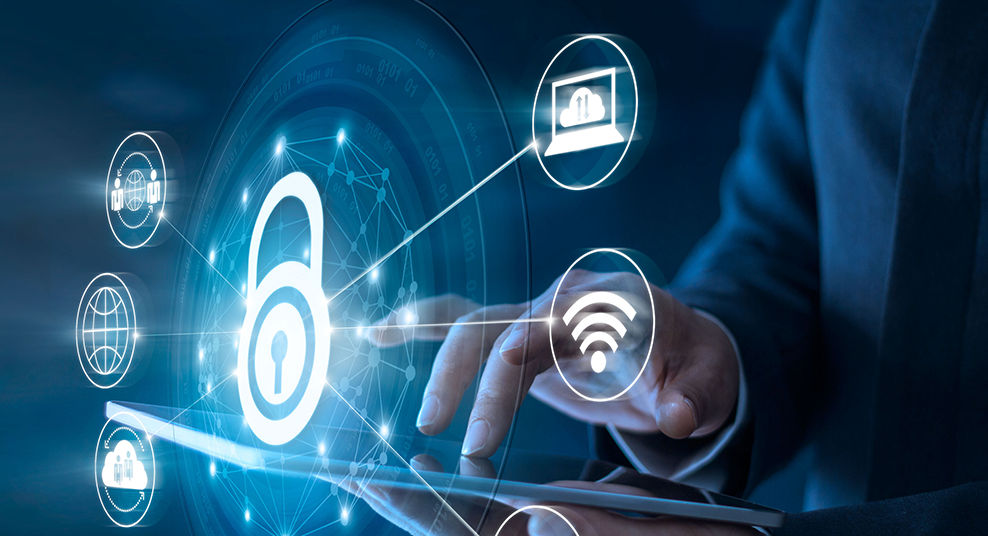Cyber Resilience vs. Cyber Protection: What's the Difference?
Cybersecurity is no longer just about preventing attacks. While robust defenses are crucial, organizations must also be prepared for the inevitable – a successful cyberattack. This is where the concept of cyber resilience comes into play.
Cybersecurity vs. Cyber Resilience
Cybersecurity:
- Focus: Primarily on preventing cyberattacks.
- Methods:
- Implementing firewalls, antivirus software, intrusion detection systems.
- Encrypting data.
- Conducting regular security assessments.
- Training employees on security best practices.
- Goal: To keep attackers out and prevent breaches.
Cyber Resilience:
- Focus: On the ability to withstand and recover from cyberattacks.
- Methods:
- Developing and testing incident response plans.
- Implementing robust business continuity and disaster recovery plans.
- Ensuring data backups and redundancy.
- Building a culture of security awareness across the organization.
- Goal: To minimize the impact of a cyberattack and ensure business continuity.
Key Differences Summarized
| Feature | Cybersecurity | Cyber Resilience |
|---|---|---|
| Primary Focus | Prevention | Recovery and Minimization of Impact |
| Approach | Building defenses | Preparing for and responding to attacks |
| Emphasis | Keeping attackers out | Maintaining business operations |
| Outcome | Preventing breaches | Withstanding and recovering from breaches |
Get A Free Demo Of Our GRC Platform Today
The Importance of Both
Cybersecurity and cyber resilience are not mutually exclusive. They are complementary concepts that work together to enhance an organization's overall security posture.
- Strong cybersecurity measures are essential for minimizing the risk of a successful attack.
- Robust cyber resilience capabilities ensure that the organization can quickly recover from any incident and minimize disruption to business operations.
Get A Free Demo Of Our GRC Platform Today
Cyber Security Automation: Key Benefits and Best Practices
Security automation is a methodology that leverages technology to automate security operations, such as vulnerability management, threat detection, incident response, and compliance management. The goal of security automation is to streamline these operations, reduce the workload of security teams, and minimize the risk of human error.
The security automation process begins with identifying repetitive security tasks that can be automated, such as software patching and updating, malware detection, and firewall management. Next, organizations must identify and deploy the appropriate automated tools and processes to execute these tasks.
By using automated solutions, organizations can streamline their security operations, reduce the risk of human error, and detect and respond to security incidents more quickly and effectively. Security automation also helps organizations meet regulatory compliance requirements and save costs associated with security incidents.
Get A Free Demo Of Our GRC Platform Today
Key Benefits Of Using Security Automation
- Accelerates the containment of infected endpoints/devices
- Provides in-depth knowledge about security threats
- Identifies application security vulnerabilities
- Decreases the cost of cybersecurity operations
- Reduces the number of security events that must be investigated
- Reduces the number of insecure or non-compliant endpoints or IoT
- Improves the ability to prioritize threats and vulnerabilities
- Increases the productivity of the current security personnel
- Helps to ensure compliance with security policies and procedures
- Reduces the time needed to investigate and resolve incidents
- Helps improve communication among different teams within the organization
- Reduce false positives and/or false negative rates
Enterprise Security and Compliance in Scheduling Automation Platforms: A Focus on Cyber Resilience
Scheduling automation platforms have become indispensable for modern businesses. However, with increased reliance on these tools comes the critical need to prioritize enterprise security and compliance. This is where the concept of cyber resilience becomes paramount.
Key Considerations for Enterprise Security and Compliance:
Data Security:
- Data Encryption: Ensure all sensitive data, including customer information, meeting schedules, and internal communications, is encrypted both in transit and at rest.
- Access Controls: Implement robust access controls, such as multi-factor authentication (MFA), role-based access control (RBAC), and least privilege access, to restrict access to sensitive data.
- Data Loss Prevention (DLP): Implement DLP measures to prevent the accidental or malicious exfiltration of sensitive data.
Compliance:
- Data Privacy Regulations: Ensure compliance with relevant data privacy regulations such as GDPR, CCPA, and HIPAA.
- Industry Standards: Adhere to industry-specific security standards like ISO 27001 and SOC 2.
- Regular Audits and Assessments: Conduct regular security audits and penetration testing to identify and address vulnerabilities.
Cyber Resilience:
- Business Continuity and Disaster Recovery (BCDR): Develop and test robust BCDR plans to ensure business continuity in the event of a cyberattack or other disruptions.
- Incident Response: Establish clear incident response procedures to effectively handle security breaches, minimize downtime, and restore operations quickly.
- Security Awareness Training: Conduct regular security awareness training for employees to educate them about potential threats1 and best practices for data security.
Get A Free Demo Of Our GRC Platform Today
Selecting a Scheduling Automation Platform:
When choosing a scheduling automation platform for your enterprise, prioritize the following:
- Strong Security Posture: Inquire about the platform's security certifications, data encryption methods, and access control mechanisms.
- Compliance Certifications: Look for platforms that comply with relevant industry standards and regulations.
- Cyber Resilience Features: Evaluate the platform's ability to support business continuity and disaster recovery.
- Vendor Security Practices: Assess the vendor's security practices, including their approach to threat detection, incident response, and vulnerability management.
Conclusion
By prioritizing enterprise security and compliance, and by embracing the principles of cyber resilience, organizations can leverage the benefits of scheduling automation platforms while mitigating the risks associated with data breaches and other cyber threats. Organizations must adopt a holistic approach to security that encompasses both robust cyber protection measures and a strong focus on cyber resilience. By investing in both prevention and recovery, organizations can effectively mitigate the risks associated with cyberattacks and ensure business continuity in the face of adversity. Get A Free Demo Of Our GRC Platform Today

